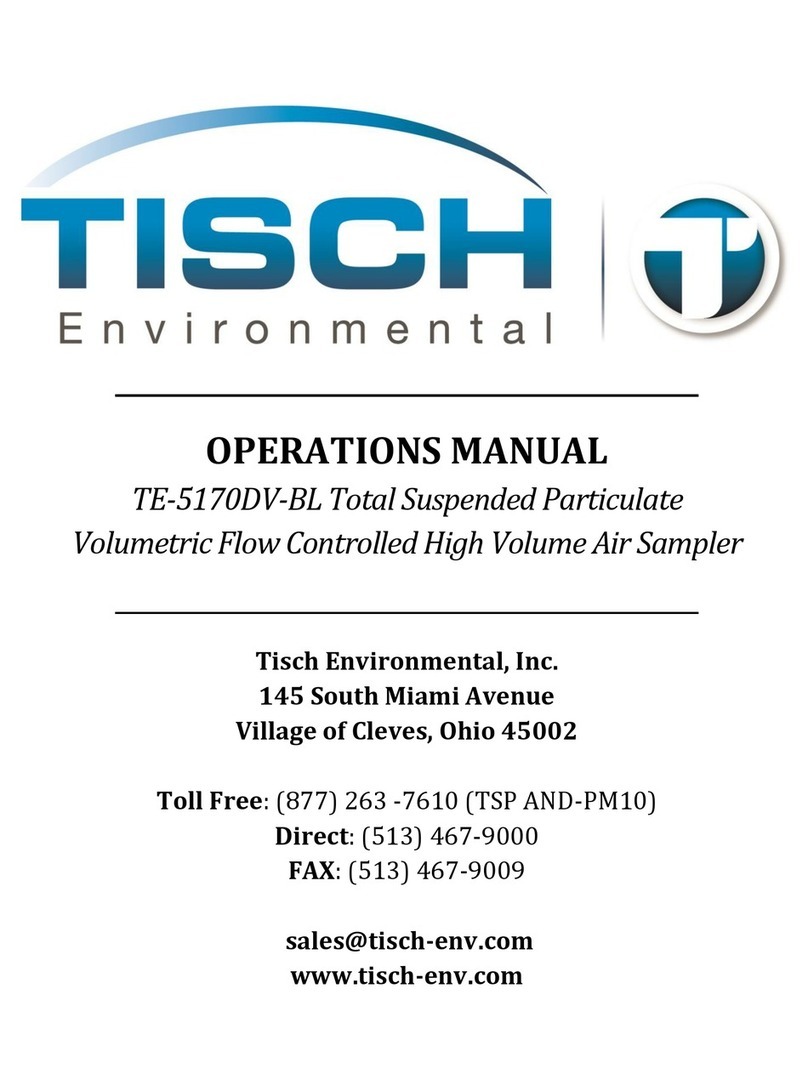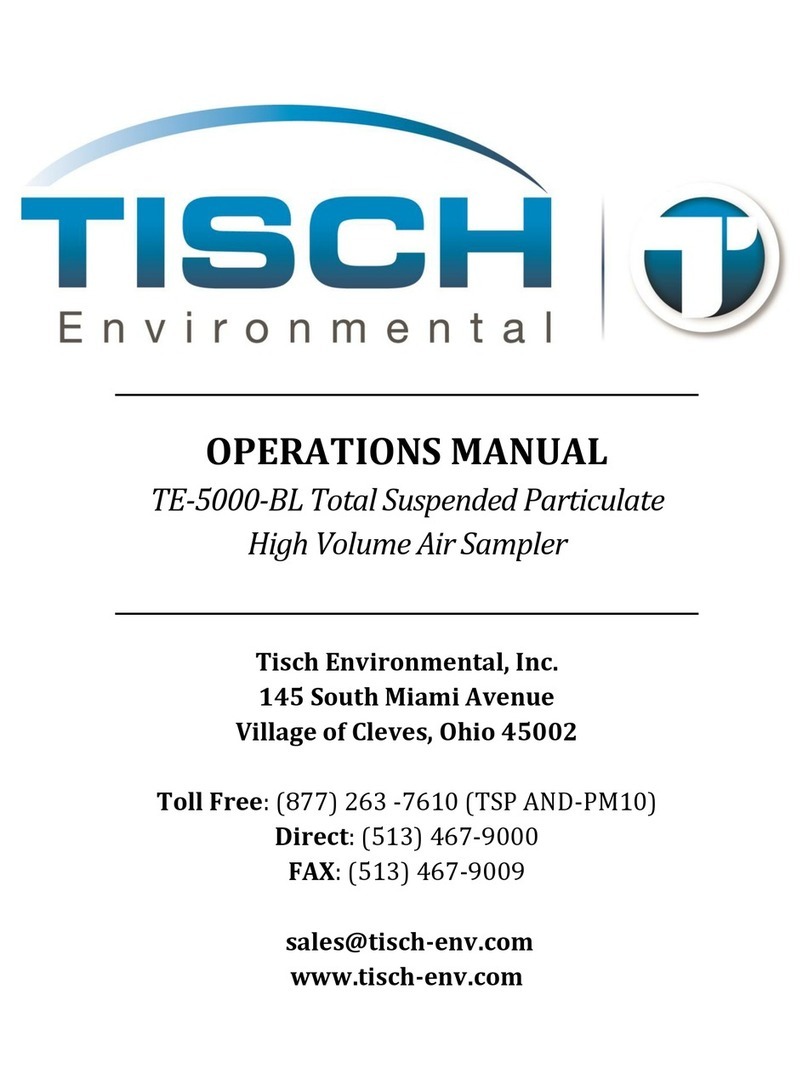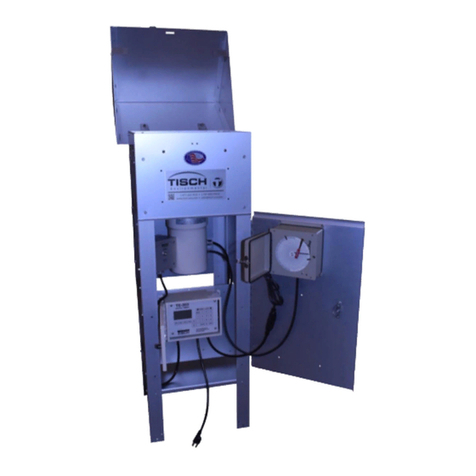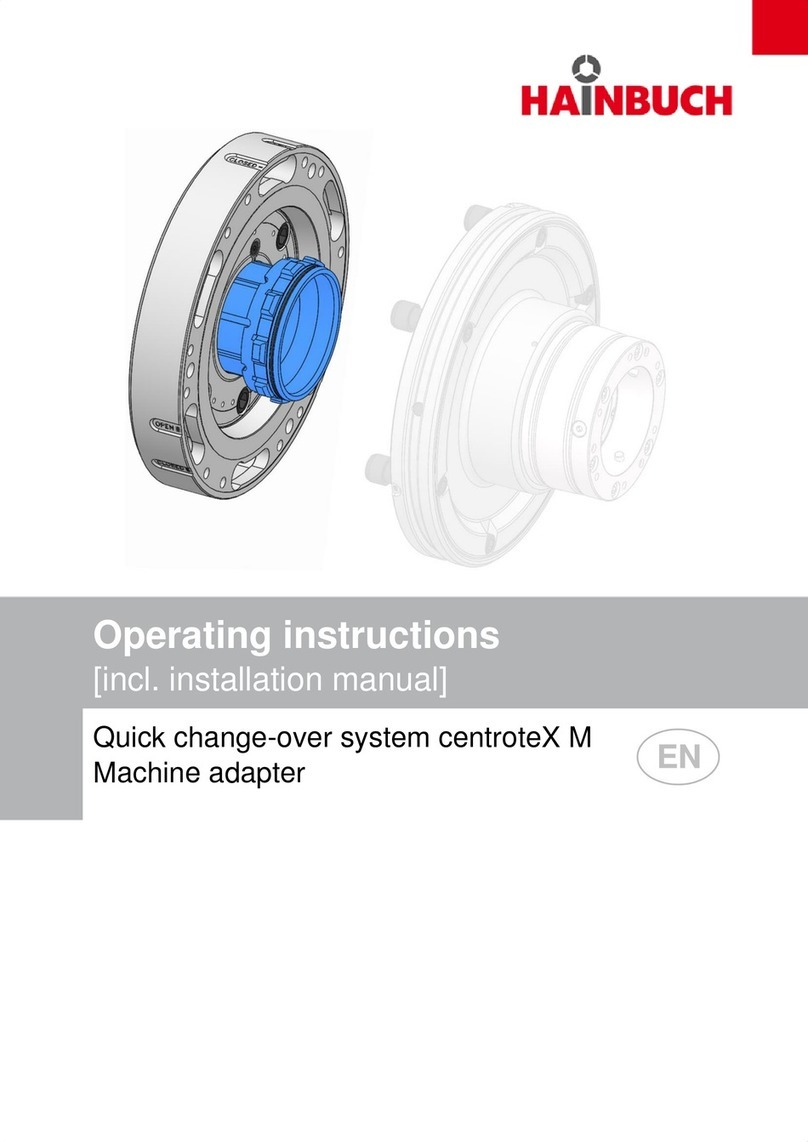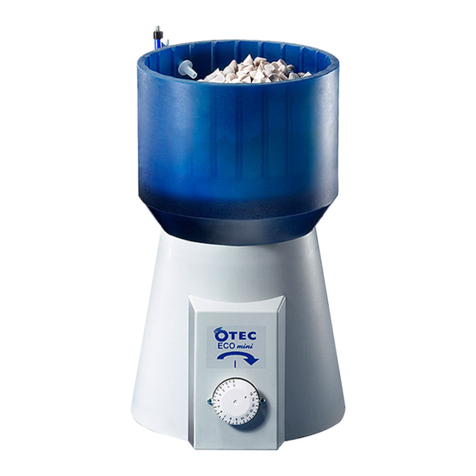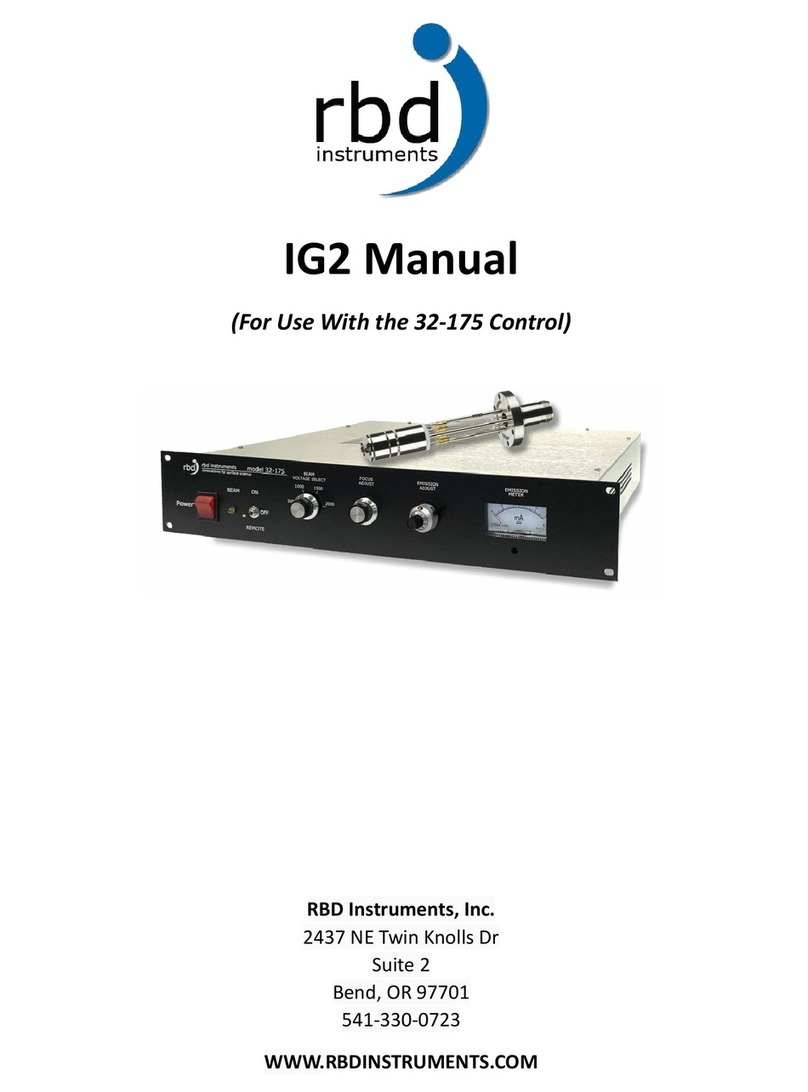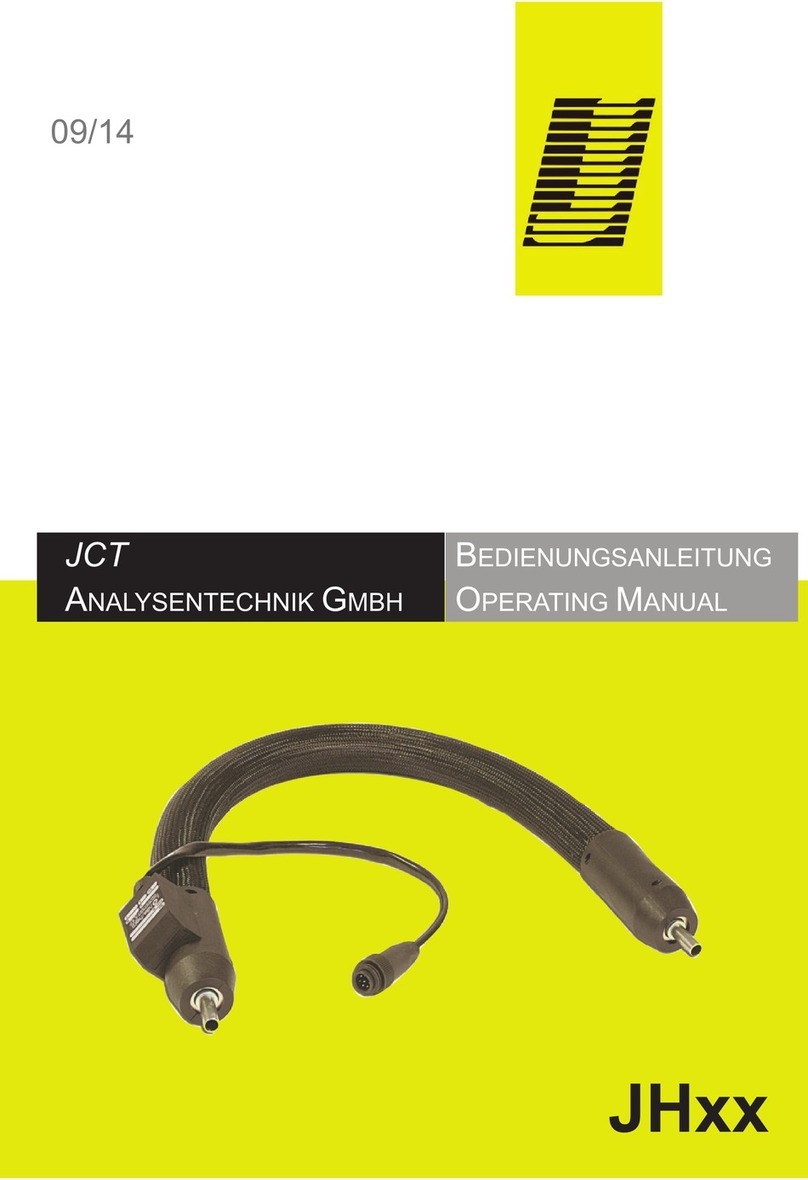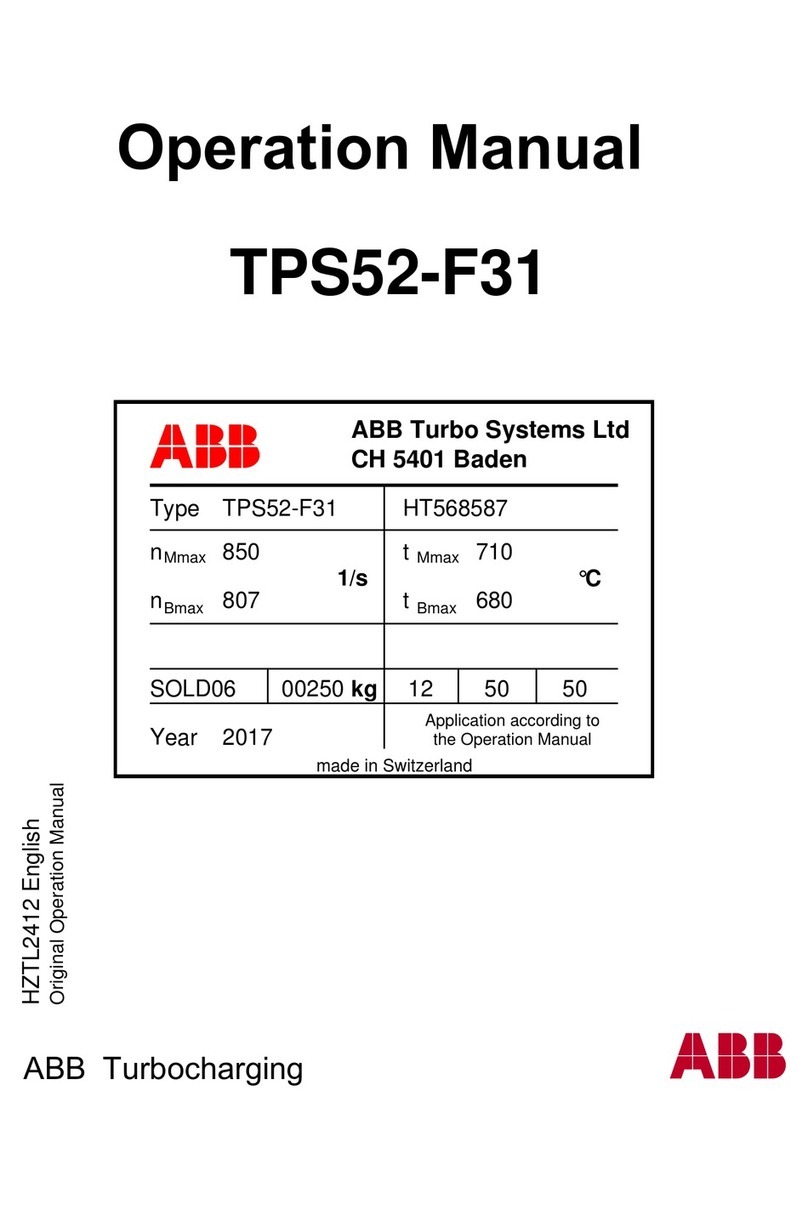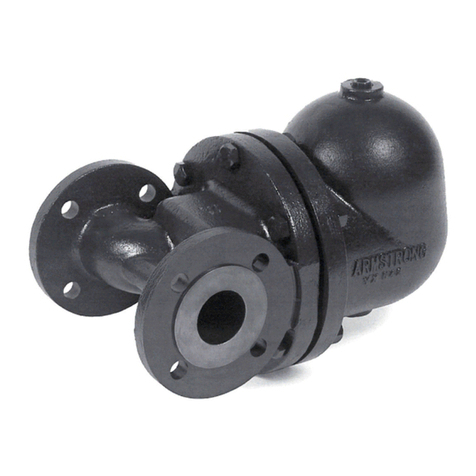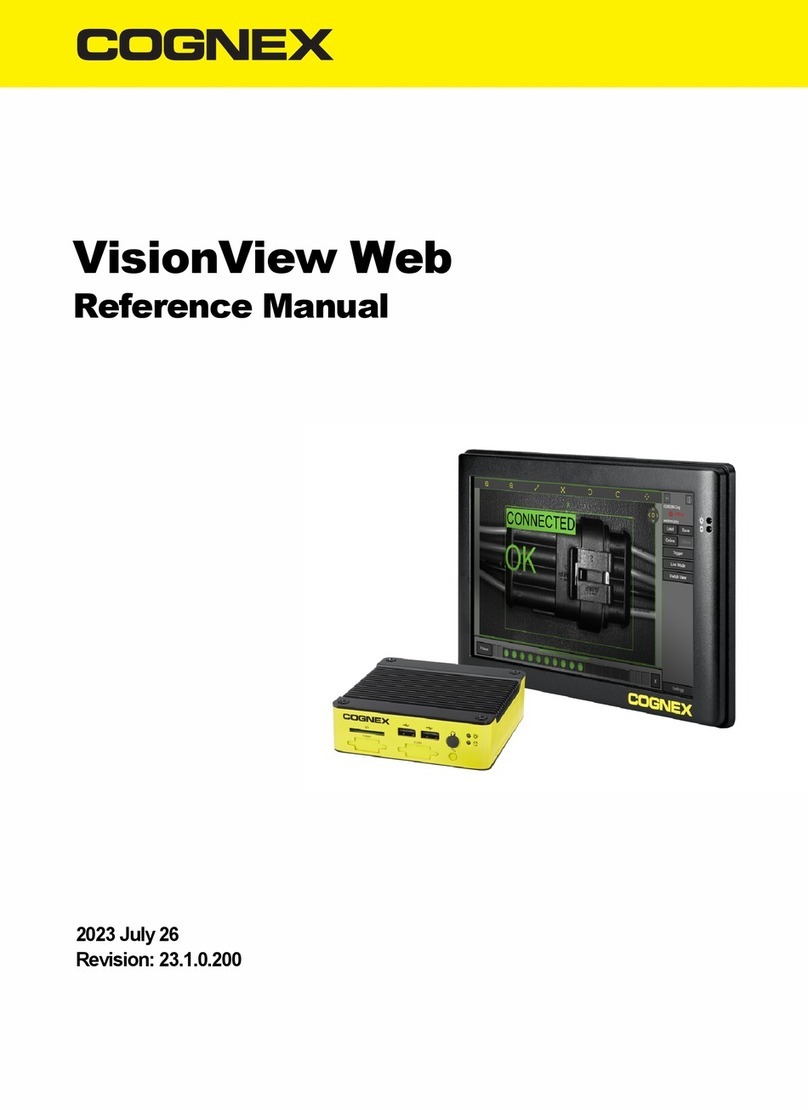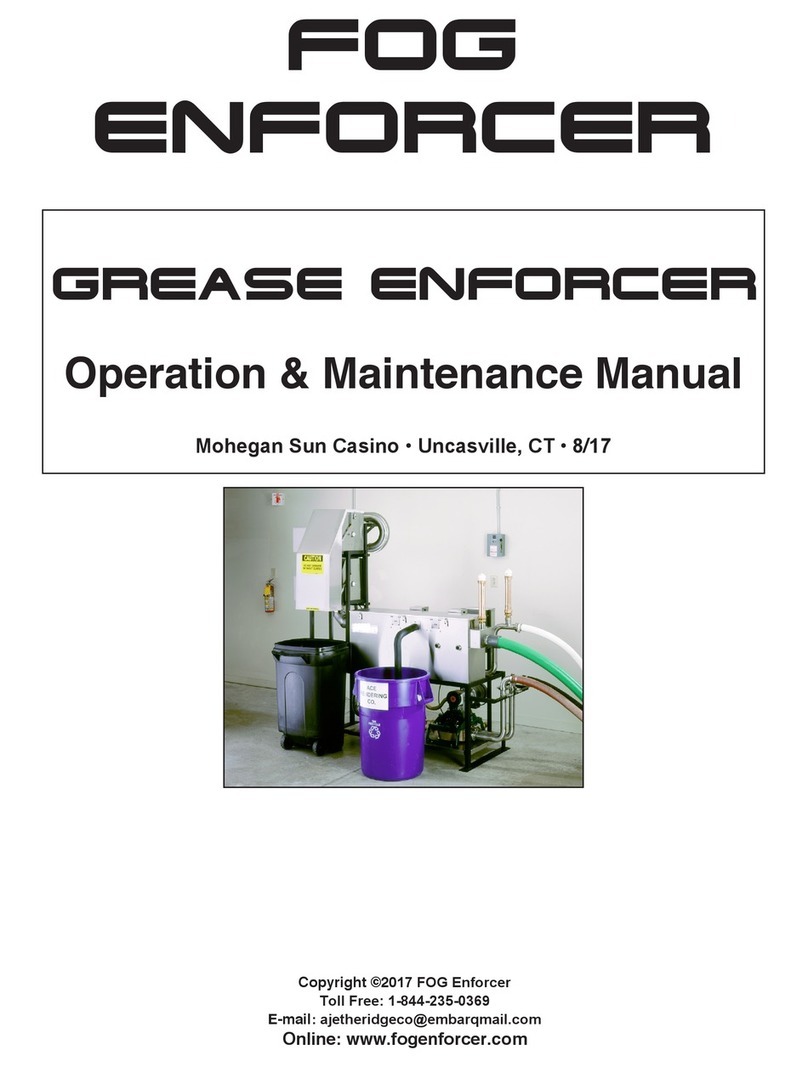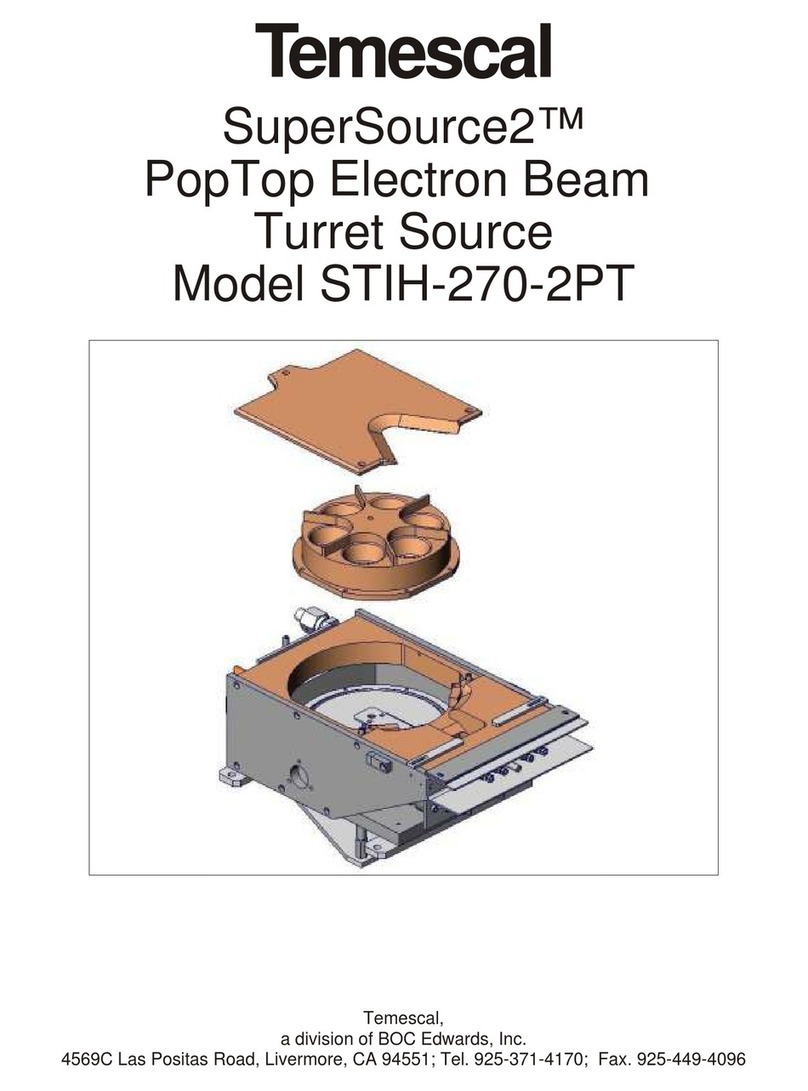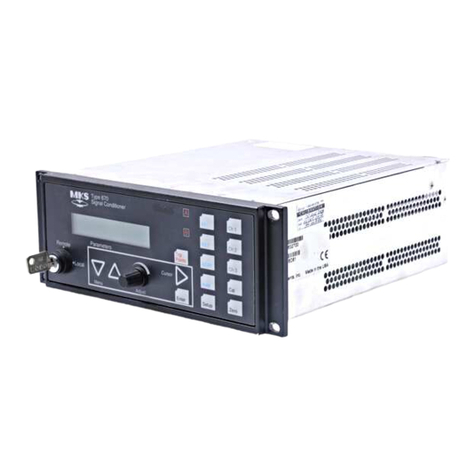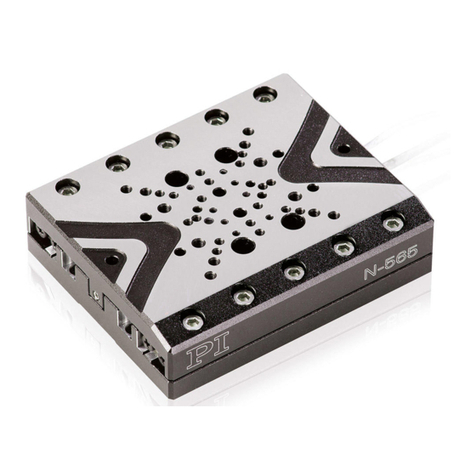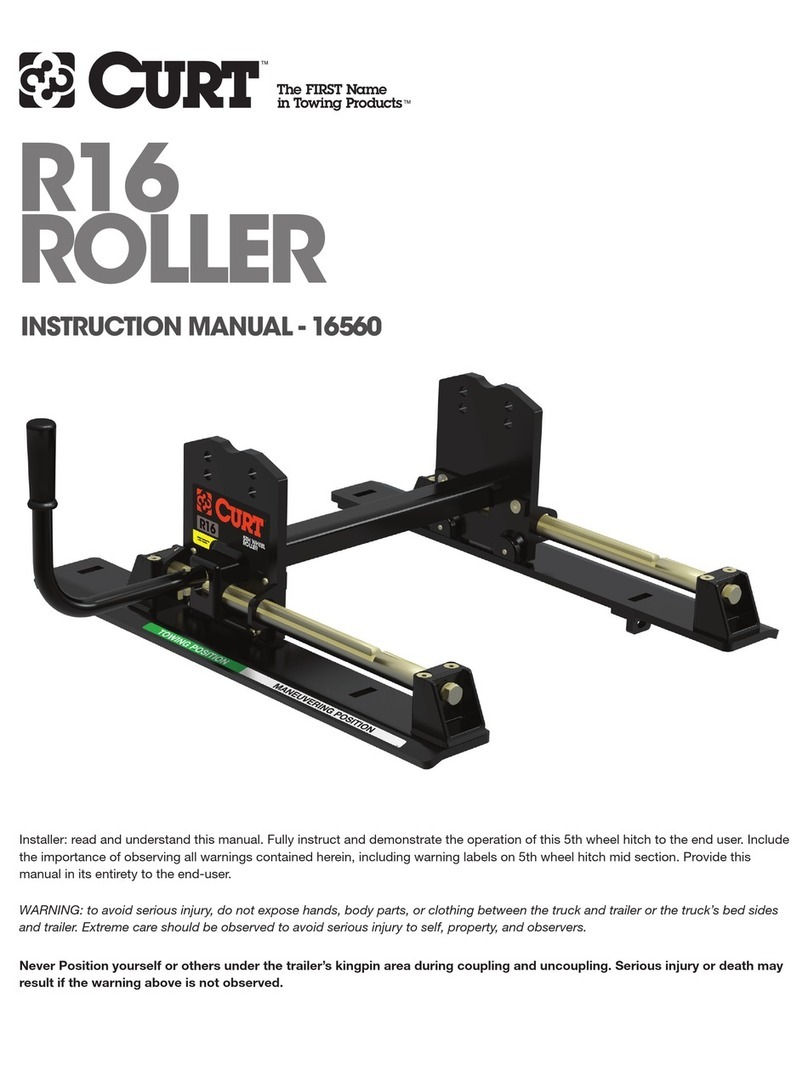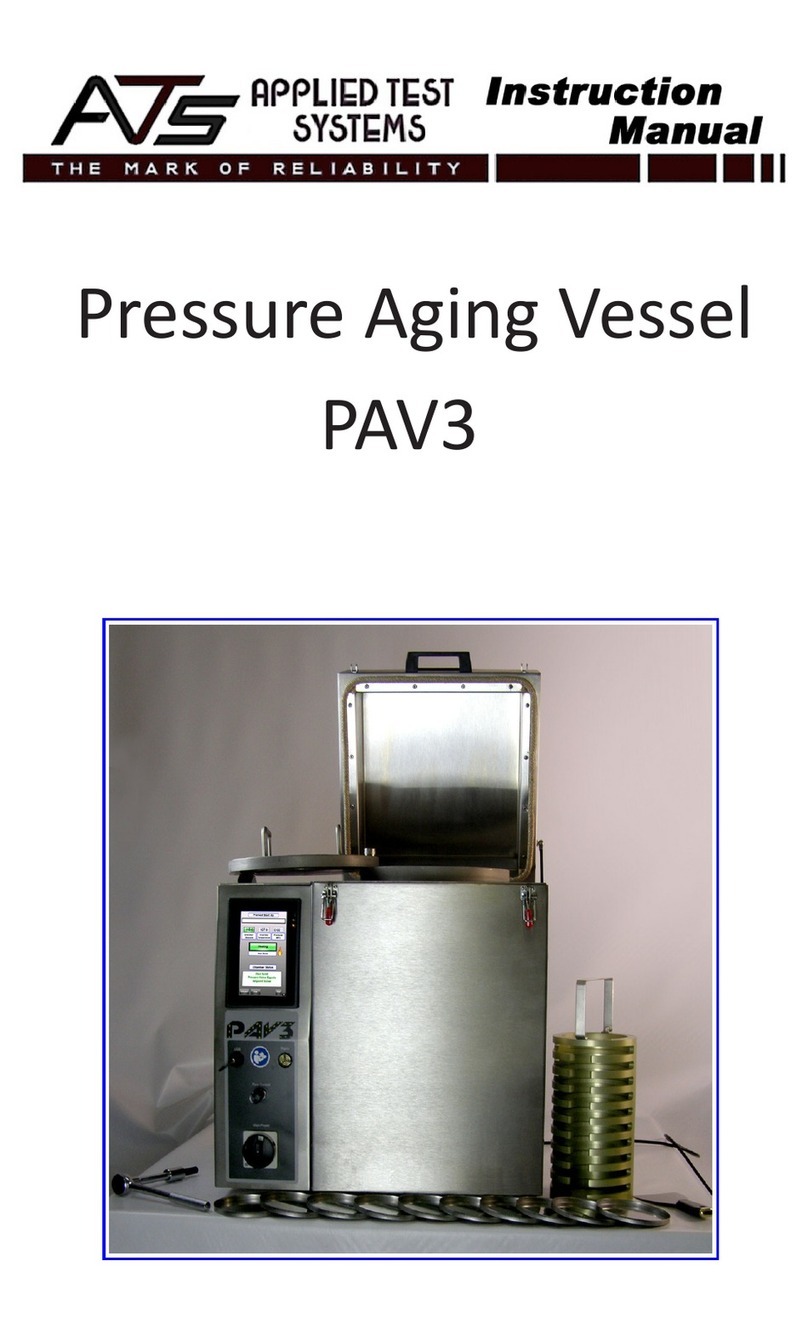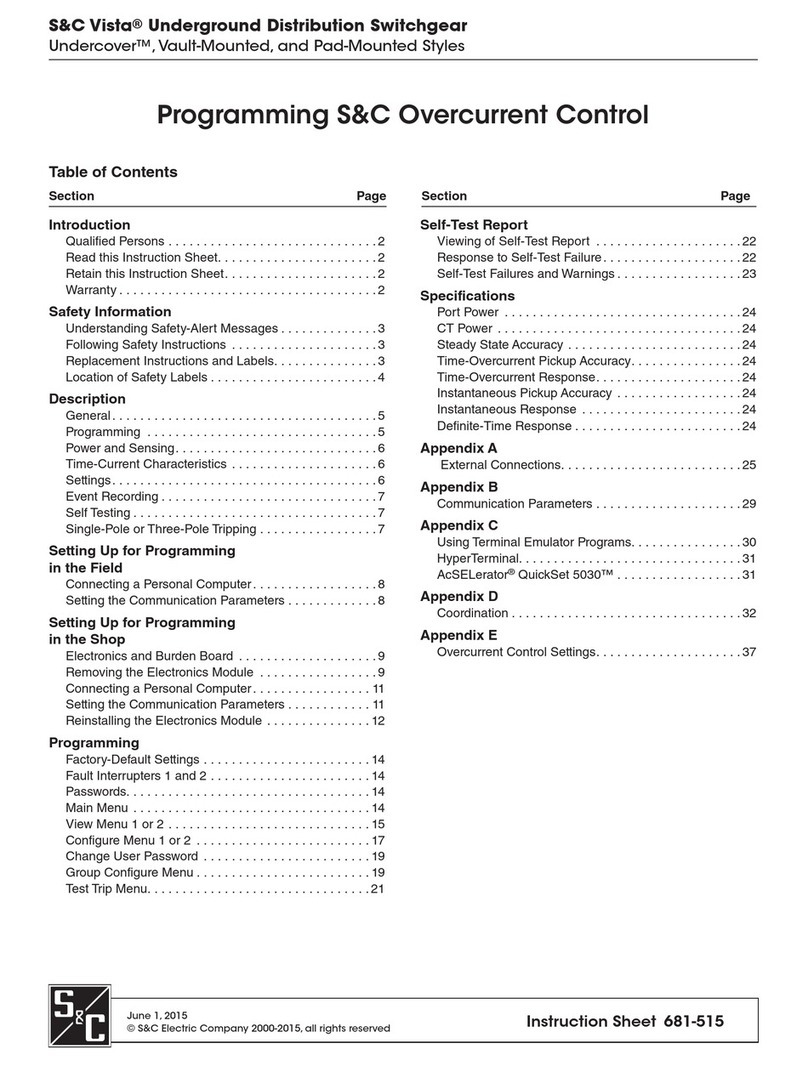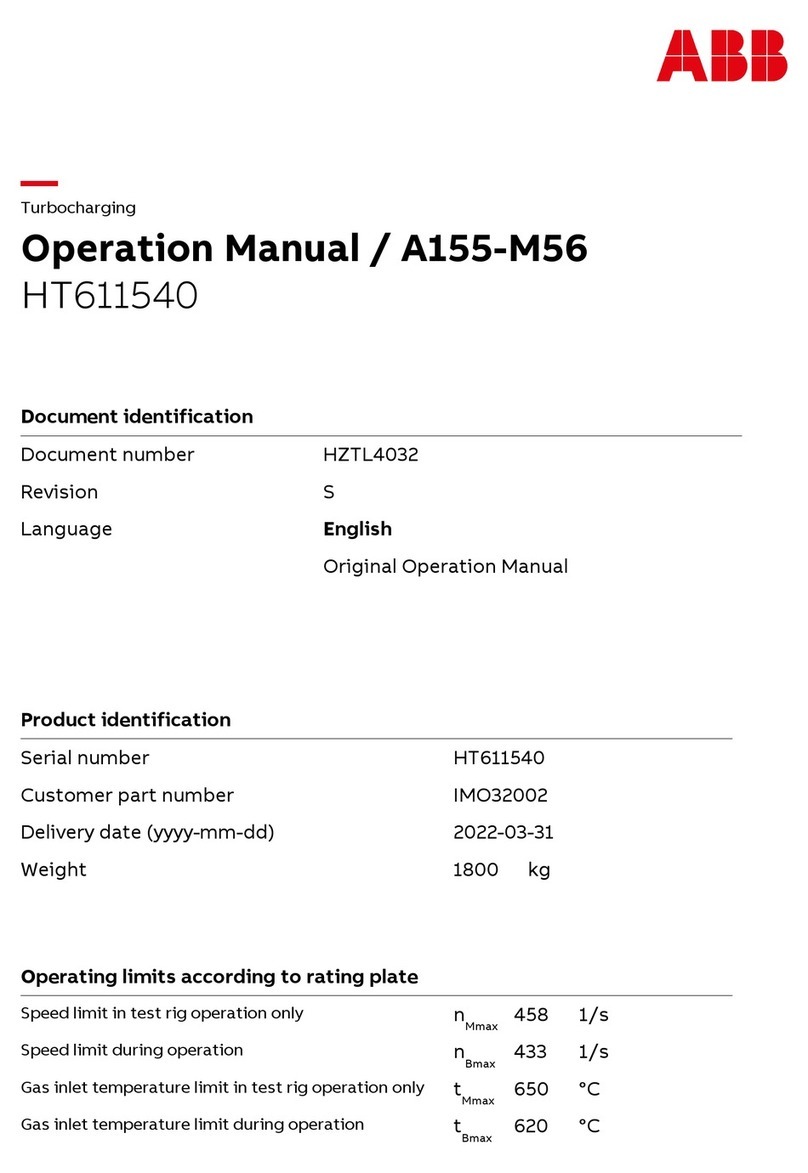Tisch Environmental TE-5170-BL User manual

OPERATIONS MANUAL
TE-5170-BL Brushless
Total Suspended Particulate
Mass Flow Controlled
High Volume Air Sampler
Tisch Environmental, Inc.
145 South Miami Avenue
Village of Cleves, Ohio 45002
Toll Free: (877) 263 -7610 (TSP AND-PM10)
Direct: (513) 467-9000
FAX: (513) 467-9009
www.tisch-env.com

TE-5170-BL TSP MFC 2 Operations Manual
TE-5170-BL Mass Flow Controlled
Total Suspended Particulate High Volume Brushless Air Sampler

TE-5170-BL TSP MFC 3 Operations Manual
Welcome
We are the experts in high volume air sampling, lead sampling, lead
samplers, particulate monitoring, particulate emissions, pesticide
monitoring, pesticide sampling, total suspended particles, particulate
sampler, Federal Reference Method PM-10, Federal Reference Method PM2.5,
EPA Method TO-4A, EPA Method TO-9A, EPA Method TO-13A. TEI is a family
business located in the Village of Cleves, Ohio. TEI employs skilled personnel
who average over 20 years of experience each in the design, manufacture,
and support of air pollution monitoring equipment. Our modern well-
equipped factory, quality philosophy and experience have made TEI the
supplier of choice for air pollution monitoring equipment. Now working on
the fourth generation, TEI has state-of-the-art manufacturing capability and
is looking into the future needs of today's environmental professionals.
Assistance
If you encounter problems or require detailed explanations, do not hesitate
to contact Tisch Environmental offices by e-mail or phone.
Toll Free: (877) 263 -7610 (TSP AND-PM10)
Direct: (513) 467-9000
FAX: (513) 467-9009
www.tisch-env.com

TE-5170-BL TSP MFC 4 Operations Manual
Table of Contents
Welcome ________________________________________________________________________ 3
Assistance________________________________________________________________________ 3
Introduction _________________________________________________________________ 6
EPA Standards ____________________________________________________________________ 6
Safety Precautions _________________________________________________________________ 6
Important Safety Instructions ________________________________________________________ 6
Electrical Installation _______________________________________________________________ 7
Do Not Abuse Cords________________________________________________________________ 7
Extension Cords ___________________________________________________________________ 7
Product Description ___________________________________________________________ 8
Introduction ______________________________________________________________________ 8
Applications ______________________________________________________________________ 8
Calibration Requirements ___________________________________________________________ 8
Calibration Kit ____________________________________________________________________ 9
Parts ___________________________________________________________________________ 10
Assembly___________________________________________________________________ 12
Gabled Roof Assembly_____________________________________________________________ 13
Electrical Set-Up__________________________________________________________________ 15
Operations _________________________________________________________________ 16
Calibration Procedure _____________________________________________________________ 16
Example Calculations ______________________________________________________________ 21
Total Volume ____________________________________________________________________ 26
Sampler Operation________________________________________________________________ 27
Timer Preparation ________________________________________________________________ 28
TE-5007 7-Day Mechanical Timer ____________________________________________________________ 28
Troubleshooting _____________________________________________________________ 29
Maintenance and Care________________________________________________________ 31
TE-5170-BL MFC TSP Sampler _______________________________________________________ 31

TE-5170-BL TSP MFC 5 Operations Manual
Warranty __________________________________________________________________ 32
Assembly Drawings __________________________________________________________ 33
TE-5005-BL Brushless Blower Motor __________________________________________________ 33
TE-5004 Filter Holder Assembly______________________________________________________ 34
Calibration Worksheet ________________________________________________________ 35
Calibrator Certificate _________________________________________________________ 36

TE-5170-BL TSP MFC 6 Operations Manual
Introduction
EPA Standards
The following manual will instruct you in the unpacking, assembly,
operation, calibration, and use of this product. For information on air
sampling principles, procedures and requirements and to ensure compliance
with government regulations, refer to Title 40 of the Code of Federal
Regulations Appendix B to Part 50, Reference Method for
Determination of Suspended Particulate Matter in the Atmosphere
(High Volume Method) or Appendix G to Part 50, Reference Method for
the Determination of Lead in Suspended Particulate Matter Collected
from Ambient Air. For additional information, contact the local
Environmental Protection Agency office serving your area.
Safety Precautions
Before using Tisch Environmental products, always review the
corresponding operations manuals and take all necessary safety precautions,
especially when working with electricity.
Important Safety Instructions
Read and understand all instructions. Do not dispose of these instructions.
Failure to follow all instruction listed in this manual may result in electric
shock, fire, and/or personal injury. When using an electrical device, basic
precautions must always be followed, including the precautions listed in the
safety section of this manual. Never operate this unit in the presence of
flammable materials or vapors are present as electrical devices may produce
arcs or sparks that can cause fire or explosions. Always disconnect power
supply before attempting to service or remove any components. Never
immerse electrical parts in water or any other liquid. Always avoid body
contact with grounded surfaces when plugging or unplugging this device is
wet or dangerous conditions.

TE-5170-BL TSP MFC 7 Operations Manual
Electrical Installation
Installation must be carried out by specialized personal only, and must
adhere to all local safety rules. This unit can be used for different power
supply versions; before connecting this unit to the power line, always check if
the voltage shown on the serial number tag corresponds to the one on your
power supply. This product does use grounded plugs and wires. Grounding
provides the path of least resistance for electrical currents, thereby reducing
the risk of electric shock to users. This system is equipped with electrical
cords with internal ground wires and a grounding plug. The plug must be
plugged into a matching outlet that is properly installed and grounded in
accordance with all local codes and ordinances. Do not modify the plug
provided. If plug will not fit outlet, have the proper corresponding outlet
installed by a professional, qualified electrician.
Do Not Abuse Cords
In the event that any electrical component of this system needs to be
transported, DO NOT carry the unit by its power cord or unplug the unit by
yanking the cord from the outlet. Pull the plugs, not the cords, to reduce
risk of damage to unit. Keep all cords away from heat, oil, sharp objects, and
moving parts.
Extension Cords
It is always advisable to use the shortest extension cord possible. Grounded
units require a three-wire extension cord. As the distance from the supply
outlet increases, you must use a heavier gauge extension cord. Using
extension cords with inadequately sized wires results in serious changes in
voltage, resulting in a loss of power and possible damage to equipment. It is
recommended to only use 10-gauge extension cords for this product. Never
use cords that exceed one hundred feet. Outdoor extension cords must be
marked with the suffix “W-A” (or “W” in Canada)to indicate that it is suitable
for outdoor usage. Always ensure that extension cords are properly wired
and in good electrical condition. Always replace damaged extension cords
immediately, or seek repair from qualified electricians before further use.
Remember to protect extension cords from sharp objects, excessive heat, and
damp or wet conditions.

TE-5170-BL TSP MFC 8 Operations Manual
Product Description
Introduction
The High Volume Air Sampler (also known as a lead sampler) is the
recommended instrument for sampling large volumes of air for the collection
of TSP (Total Suspended Particulate). The TE-5170-BL TSP MFC sampler
consists of a TE-5001 Anodized Aluminum Shelter, TE-5005-BL Aluminum
Blower Motor Assembly, TE-5004 8”x10” Stainless Steel Filter Holder with
probe hole, TE-5009 Continuous flow/pressure recorder, TE-300-310-BL
Mass Flow Controller, TE-5007 Mechanical Timer, and TE-5012 Elapsed
Time Indicator.
Applications
Ambient air monitoring to determine mass concentration of suspended
particulate levels relative to air quality standards. This result is reported
in micrograms per cubic meter.
Impact of a specific source on ambient levels of suspended particulates by
incorporating a "wind-direction-activation" modification which permits
the sampler to operate only when conditions are such that a source-
receptor relationship exists.
Calibration Requirements
TE-5170-BL TSP MFC High Volume Brushless Air Sampler should be
calibrated:
Upon installation
After routine maintenance or exchange of vacuum motor
Once every quarter (three months)
After 360 sampling hours

TE-5170-BL TSP MFC 9 Operations Manual
Calibration Kit
The TE-5028 is the preferred method to calibrate the TE-5170 MFC TSP High
Volume Air Sampler. It simulates change in the resistance by merely rotating
the knob on the top of the calibrator. The infinite resolution lets the
technician select the desired flow resistance. The TE-5028 calibration kit
includes: carrying case, 30” slack tube water manometer, adapter plate, 3’
piece of tubing, and TE-5028A orifice with flow calibration certificate.
Optional electronic manometer is available.
Each TE-5028A is individually calibrated on a primary standard positive
displacement device (Rootsmeter) which is directly traceable to NIST.
** It is recommended by the EPA in in the that each calibrator should be
re-calibrated annually. (1998 Code of Federal Regulations Parts 50 to
51, Appendix B to Part 50, Reference Method for the Determination of
Suspended Particulate Matter in the Atmosphere, 9.2.5 page 29.)

TE-5170-BL TSP MFC 10 Operations Manual
Parts
1. Shelter Box - 48" x 20" x 20" 75 lbs
TSP MFC System with Brushless
Motor
TE-5170-BL 110volt, 60hz
TE-5170-BLX 220volt, 50hz
TE-5170-BLXZ 220volt, 60hz
Brushless Blower Motor
Assembly with tubing
TE-5005-BL 110volt
TE-5005-BLX 220volt
7 Day Mechanical Timer
TE-5007 110volt, 60hz
TE-5007X 220volt, 50hz
TE-5007XZ 220volt, 60hz
Mass Flow Controller
TE-300-310-BL 110volt
TE-300-310-BLX 220volt

TE-5170-BL TSP MFC 11 Operations Manual
24 Hour Chart Recorder
TE-5009 110volt 60hz
TE-5009X 220volt, 50hz
TE-5009XZ 220volt, 60hz
Elapsed Time Indicator
TE-5012 110volt, 60hz
TE-5012X 220volt, 50hz
TE-5012XZ 220volt, 60hz
8” x 10” TSP Stainless Steel
Filter Holder with probe hole
TE-5004
Filter Holder Gasket
TE-5005-9
Envelope box of charts and manual
TE-106
2. Lid Box - 19" x 14" x 14" 9 lbs
Gabled Roof
TE-5001-10
*** Save the shipping containers and packing material for future use.

TE-5170-BL TSP MFC 12 Operations Manual
Assembly
1. Open shelter box and remove Anodized Aluminum Shelter.
2. Enclosed in the 13 x 10" x 9" box on bottom of shelter is the TE-5005-BL
Blower Motor Assembly. Enclosed in the 13” x 10” x 9” box inside of
shelter is the TE-5004 Filter Holder with TE-5005-9 gasket. Remove from
boxes.
3. Open lid box and remove 5001-10 lid (see page 13).
4. Screw TE-5005-BL Blower Motor Assembly onto TE-5004 Filter Holder
(tubing, power cord, and hole in filter holder collar to the right) make
sure TE-5005-9 gasket is in place.
5. Lower Filter Holder and Blower Motor down through top support pan on
shelter. Insert Flow Controller probe into filter holder collar. Before
tightening make sure probe slot is turned so air coming into filter holder
goes through it. Connect tubing from pressure tap of blower motor to TE-
5009 Flow Recorder.

TE-5170-BL TSP MFC 13 Operations Manual
Gabled Roof Assembly
The following steps are accompanied by pictures to aid your understanding
of gabled roof assembly. Please be aware that the pictures are
standardized and may not exactly match the equipment that you are
using. The gabled roof is used on several products and the assembly
procedure is the same.
Lid Hardware
5 pcs 10-24 x 1/2 pan head screws
5 pcs 10-24 stop nuts
1 pc 6-32 x 3/8 pan head screw
1 pc 6-32 hex nut
1 pc 20" chain with “S” hook
1 pc TE-5001-10-9 roof back
catch
1 pc TE-5001-10-10 front catch
1 pc TE-5001-10-11 rear lid hasp
Step 1
Secure TE-5001-10-10 front catch to the
shelter using 2 10-24 pan head screws
with stop nuts. *Do not tighten completely,
this may need to be adjusted after final
assembly*
Step 2
Secure TE-5001-10-9 roof back catch to
the back of shelter using #6-32 pan head
screw with stop nut.
Step 3
Secure TE-5001-10-11 rear lid hasp
inside the lid with the slot angled up
using (2) #10-24 pan head screws with
stop nuts. *Do not tighten completely, this
may need to be adjusted after final
assembly*

TE-5170-BL TSP MFC 14 Operations Manual
Step 4
Remove (4) #10-24 x ½” pan head screws
from the rear of the shelter, attach the lid
to the shelter by placing the lid hinge
plates on the “OUTSIDE” of the shelter,
line the hinges up with the (4) threaded
holes in the back of the shelter. Use the
(4) #10-24X ½” pan head screws that
were removed preciously to attach the lid
hinges to the shelter. *Tighten
completely*
Step 5
Adjust the front and rears catch to be
sure that the lid slots lowers over it when
closing. Tighten the roof back hasp and
front catch completely.
Step 6
Attach the chain and “S” hook assembly to
the side of the shelter with a #6-32 x 3/8”
pan head screw.
Step 7
The Lid can now be secured in an open or
closed position with the “S” hook.

TE-5170-BL TSP MFC 15 Operations Manual
Electrical Set-Up
Note: Standard 3-pring plug may require adapter for use in global
installations. Please consult your local electrical standards.
1. The TE-5005-BL Brushless Blower Motor plug is connected to the TE-
300-310-BL Brushless Mass Flow Controller socket.
2. The Brushless Mass Flow Controller plug plugs into the TE-5012
Elapsed Time Indicator socket side.
3. The plug side of the ETI cord set connects to the TE-5007 7-Day
Mechanical Timer timed socket on the left side of timer.
4. The other socket on timer (on the right) is hot all the time and plugs
into the TE-5009 Continuous Flow Recorder plug.
5. The plug on timer connects to the line voltage.

TE-5170-BL TSP MFC 16 Operations Manual
Operations
Visit, www-tisch-env.com/calibration-worksheets, to download
calibration worksheets. The calibration worksheets allow the user to
input the data and automatically make the calculations. The manual
calculation method is described in the following sections for your
reference, however, it is highly recommended to download the
calibration worksheets.
Calibration Procedure
The following is a step by step process of the calibration of a TE-5170 Mass
Flow Controlled Total Suspended Particulate High Volume Sampling
Systems. Following these steps are example calculations determining the
calibration flow rates, and resulting slope and intercept for the sampler.
These instructions pertain to the samplers which have air flow controlled by
electronic mass flow controllers (MFC) in conjunction with a continuous flow
recorder or a manometer. This calibration differs from that of a volumetric
flow controlled sampler.
The Total Suspended Particulate samplers (TSP) are also referred to as lead
samplers as this is another use for these instruments. The instruments are
also suitable for capturing large particulate and heavy metal particles. Air
monitoring studies that are concerned with smaller respirable particulate
will call for the use of PM-10 particulate samplers. The TSP samplers have a
wide range of acceptable air flow operating limits, i.e., 1.10 to 1.70 m3/min
(39 to 60 CFM). A mass flow controller will sense a decrease in air flow as
particulate is collected in the filer media and increases the voltage to the
blower which increases the blower speed in order to maintain the set flow
rate.
The attached example calibration worksheets can be used with a TE-5028
Variable Orifice Calibrator which uses an adjustable or variable orifice.
One example calibration sheet and one blank calibration sheet are attached
to this manual. To download the electronic spreadsheet, please visit
www.tisch-env.com. It is highly recommended to download the

TE-5170-BL TSP MFC 17 Operations Manual
electronic spreadsheet and use the spreadsheet features to complete
calculations, calibration worksheets can be found by visiting
www.tisch-env.com.
Proceed with the following steps to begin the calibration:
1. Disconnect the sampler motor from the mass flow controller and connect
the motor to a stable AC power source.
2. Mount the calibrator orifice and top loading adapter plate to the sampler.
A sampling filter is generally not used during this procedure. Tighten the
top loading adapter hold down nuts securely to ensure that no air leaks
are present.
3. Allow the sampler motor to warm up to its normal operating temperature
(approximately 10-15 minutes).
4. Conduct a leak test by covering the hole(s) on top of the orifice and
pressure tap on the orifice with your hands. Listen for a high-pitched
squealing sound made by escaping air. If this sound is heard, a leak is
present and the top loading adapter hold-down nuts need to be re-
tightened. If the sound is lower, the leak is near one of the other gaskets
in the system. Avoid running the sampler for longer than 30 seconds
at a time with the orifice blocked to avoid overheating the motor. Do
not perform this leak test procedure with a manometer connected to the
side tap on the calibration orifice or the blower motor. Liquid from the
manometer could be drawn into the system and cause motor damage.
5. Connect one side of a water manometer to the pressure tap on the side of
the orifice with a rubber vacuum tube. Leave the opposite side of the
manometer open to the atmosphere. Note: Both valves on the manometer
have to be open for the liquid to flow freely. One side of the 'U' tube goes
up the other goes down; add together for the "H2O reading.
6. A manometer must be held vertically to ensure accurate readings.
Tapping the backside of the continuous flow recorder will help to center
the pen and provide accurate readings. When using a variable orifice (TE-
5028A), five flow rates are achieved in this step by adjusting the knob on

TE-5170-BL TSP MFC 18 Operations Manual
the variable orifice to five different positions and taking five different
readings.
7. Record the ambient air temperature, the ambient barometric pressure,
the sampler serial number, the orifice s/n, the orifice slope and intercept
with date last certified, todays date, site location and the operators
initials on the attached blank calibration sheet.
8. Disconnect the sampler motor from its power source and remove the
orifice and top loading adapter plate. Re-connect the sampler motor to
the electronic mass flow controller.
An example of a Lead (or TSP) Sampler Calibration Data Sheet has been
attached with data filled in from a typical calibration. This includes the
transfer standard orifice calibration relationship which was taken from the
Orifice Calibration Worksheet that accompanies the calibrator orifice. Since
this calibration is for a TSP sampler, the slope and intercept for this orifice
uses standard flows rather than actual flows and is taken from the
Qstandard section of the Orifice Calibration Worksheet. The Qactual flows
are only used when calibrating a PM-10 sampler.
The five orifice manometer readings taken during the calibration have been
recorded in the column on the data worksheet titled Orifice "H2O. The five
continuous flow recorder readings taken during the calibration have been
recorded under the column titled I chart.
The orifice manometer readings need to be converted to the standard air
flows they represent using the following equation:
Qstd = 1/m[Sqrt((H20)(Pa/760)(298/Ta))-b]
where:
Qstd = actual flow rate as indicated by the calibrator orifice, m3/min
H2O = orifice manometer reading during calibration, “H2O
Ta = ambient temperature during calibration, K ( K = 273 + °C)
298 = standard temperature, a constant that never changes, K
Pa = ambient barometric pressure during calibration, mm Hg
760 = standard barometric pressure, a constant that never changes, mm Hg
m = Qstandard slope of orifice calibration relationship

TE-5170-BL TSP MFC 19 Operations Manual
b = Qstandard intercept of orifice calibration relationship.
Once these standard flow rates have been determined for each of the five run
points, they are recorded in the column titled Qstd, and are represented in
cubic meters per minute.
The continuous flow recorder readings taken during the calibration need to
be corrected to the current meteorological conditions using the following
equation:
IC = I[Sqrt((Pa/760)(298/Ta))]
where:
IC = continuous flow recorder readings corrected to current Ta and Pa
I = continuous flow recorder readings during calibration
Pa = ambient barometric pressure during calibration, mm Hg.
760 = standard barometric pressure, a constant that never changes, mm
Hg
Ta = ambient temperature during calibration, K ( K = 273 + °C)
298 = standard temperature, a constant that never changes, K
After each of the continuous flow recorder readings have been corrected,
they are recorded in the column titled IC (corrected).
Using Qstd and IC (or FLOW (corrected)) as the x and y axis respectively, a
slope, intercept, and correlation coefficient can be calculated using the least
squares regression method. The correlation coefficient should never be less
than 0.990 after a five point calibration. A coefficient below .990 indicates a
calibration that is not linear and the calibration should be performed again. If
this occurs, it is most likely the result of an air leak during the calibration or
high wind speed during the calibration procedure.
The equations for determining the slope (m) and intercept (b) are as follows:

TE-5170-BL TSP MFC 20 Operations Manual
m=
( x)( y)
xy -n
x ; b = y - mx
x- n
2
2
The equation for the coefficient of correlation (r) is as follows:
r =
( x)( y)
xy - n
x-x
ny-y
n
22
2 2
where: n = number of observations
∑ = sum of
The acceptable operating flow range of a TSP sampler is 1.1 to 1.7 m3/min
(39 to 60 CFM). Looking at the worksheet (page 35) column Qstd, the flow
rates that are within this range can be identified along with the chart reading
(I) that represents them. For instance if you wanted to set this sampler at
1.265 m3/min (44.67 CFM) (Make sure the mass flow controller is plugged in
and a filter is in place) you would turn the Flow Adjustment screw until the
continuous flow recorder read 37 on the chart. By making sure that the
sampler is operating at a chart reading (or manometer reading) that is within
the acceptable range, it can be assumed that valid TSP data is being collected.
Table of contents
Other Tisch Environmental Industrial Equipment manuals
